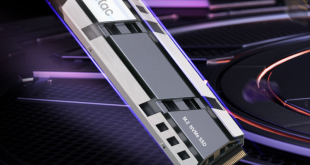Automatic CPU Overclocking:
In addition to basic CPU level-up settings, the Rampage IV Black Edition ships with custom overclocking configurations for air- and water-cooled users, as well as high base clock modes for overclockers.
The air-cooled gamers' OC profile is set to utilise a static 4.7GHz CPU frequency with 1600MHz memory. CPU VCore is set to 1.500V, but whether the system can actually operate at this frequency is chip-dependant.
The water-cooled gamers' OC profile opts for a CPU frequency of up to 4.9GHz, or 4.6GHz when all cores are loaded. Memory is still set to operate at 1600MHz, which is disappointing for users with higher-speed kits.
Manual CPU Overclocking:
We manually applied a number of voltage tweaks to test the Asus Rampage IV Black Edition motherboard’s overclocking capabilities. Adjustments included a 1.425V CPU VCore, 1.250V System Agent (SA) voltage, a PLL voltage of 1.900V, and a VTT CPU voltage of 1.300V. These levels are unlikely to cause heat issues for an IVB-E processor when combined with a high-end cooler such as Corsair’s H100i.
Load-line calibration was set to ultra high to ensure that VCore didn't drop below the levels we set when the CPU was loaded.
Using a 100MHz BCLK, the highest stable CPU frequency that we managed was 4.6GHz. This is the same limit that we hit when using Asus' X79-Deluxe motherboard, and two multiplier jumps more than MSI's X79A-GD45 Plus managed.
Our tweaking did get us a boot at 4.7GHz, but upon running Prime95 to certify stability, we were met with multiple BSODs.
We switched to the 125MHz BCLK in an attempt to squeeze additional frequency from our 4960X ES processor.
We managed the 4.625GHz that Asus' X79-Deluxe gave us using our particular 4960X ES chip. This seems to be as far as our processor will go, but it is clear that Asus' Rampage IV Black Edition is providing the overclocking headroom required to reach the chip's limits.
Using the Ultra High LLC setting, VCore loitered around the 1.440V mark in Windows.
4625MHz was achievable by way of a 125MHz base clock and 37x multiplier, but this required a 133MHz decrease in DRAM frequency to maintain absolute stability on the memory’s part.
4.625GHz (125MHz x 37) with a memory frequency of 2000MHz is the main overclocked configuration that we will use for our performance testing.
Our 4.625GHz validation with 2000MHz memory can be viewed here.
We increased voltage levels and power settings in one final attempt to break past 4.625GHz, with stability.
Even with a CPU VCore of 1.450V, 1.350V VTT CPU voltage, 1.350V SA voltage, and 2.100V PLL voltage, we could not boot past 4.625GHz with any form of stability.
Memory Overclocking:
While a system’s maximum memory frequency may be heavily swayed by the CPU’s individual memory controller, the motherboard’s performance can also help to obtain higher speeds.
We switched to a single stick of G.Skill's 2933MHz Trident X F3-2933C12D-8GTXDG memory, as well as a stick of ADATA's 2800MHz XPG V2 for validation purposes, to test the Asus Rampage IV Black Edition motherboard’s memory overclocking potential. These sticks both use Hynix MFR ICs in a single-sided configuration – a design that is intended for speeds so high that they are potentially out of reach for an IVB-E CPU's memory controller.
To eliminate the CPU as a potential source of instability, we increased its voltage and used a clock speed of 4000MHz. Memory-related voltage and settings tweaks included: CPU PLL voltage = 2.100V, System Agent (SA) voltage = 1.350V, CPU VTT voltage = 1.350V, DRAM voltage = 1.650V. XMP was disabled and timings were manually set to the memory sticks’ default settings.
Using a 100MHz base clock, our memory speed hit a maximum of 2400MHz. Knowing that our 4960X chip's IMC is capable of at least 2666MHz, we switched to the 125MHz base clock and carried on overclocking.
Breaking our own record for memory overclocking results using IVB-E, we managed to hit a 3000MHz DRAM frequency using Asus' Rampage IV Black Edition motherboard. This is 333MHz higher than we have achieved with the other X79 motherboards that have been partnered with our 4960X.
There is clearly scope for extreme overclockers to push the boundaries of their processor's IMC capability with the Rampage IV Black Edition.
Our validation with the G.Skill Trident X F3-2933C12D-8GTXDG memory running at 3000MHz can be viewed here.
 KitGuru KitGuru.net – Tech News | Hardware News | Hardware Reviews | IOS | Mobile | Gaming | Graphics Cards
KitGuru KitGuru.net – Tech News | Hardware News | Hardware Reviews | IOS | Mobile | Gaming | Graphics Cards



























what an amazing board – very very expensive though!